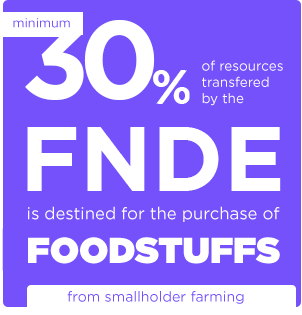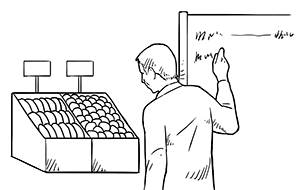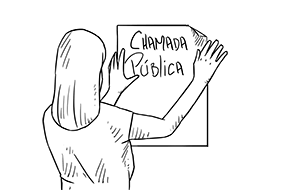In this unit, we invite you to pay attention to your region and try to understand how the reality of smallholder farming looks like. This understanding will be based on the reading of the following content, as well as on discussions with professionals involved in the PNAE´s operation. So you can better understand this theme, we´ll cover from the legal basis to the operation steps to acquire smallholder farming goods.
Acquisition of foodstuffs from smallholder farming to the PNAE: legal basis and operation
You probably remember what we´ve covered about Law no. 11,947/2009.
This Law states that a minimum 30% of financial resources transferred from the PNAE to states, municipalities and the Federal District must be used to acquire goods from smallholder farming. This purchase does not require a bidding procedure (civil service exam) as long as prices are compatible with the ones exercised in local markets and constitutional principles (Paragraph 1 Article 14 of Law no. 11,947/2009).

This measure seeks to simplify the process of public purchases from smallholder farming for school feeding, to consider the logic of smallholder farmer´s production at fair prices and, above all, to offer fresh, healthy food to our students.
Considering the discharge of bidding procedures (civil service exam), a few steps must be followed to ensure candour, transparency and effectiveness of public purchases directly from smallholder farming to school feeding.
The steps to be followed by Executive Entities (States and Municipalities) cover:
Budget verification

Working alongside actors

Elaborating the menu

Defining acquisition price

Divulging public call

Elaborating sale project

Receiving sale project

Selecting sale project

Obs. EEx can provide in the Public Call, the presentation of a sample of the products to be purchased, for prior quality control.
Signing the contract

Delivering products

Steps for the acquisition from smallholder farming for school feeding
1 of 10
Steps summary:

FOOD FOR THOUGHT
Do you know about farmers´ administrative selling procedures?
What about farmers´ organizations to guarantee that their production reaches schools?
Go ahead and find out how all this happens in the PNAE!

